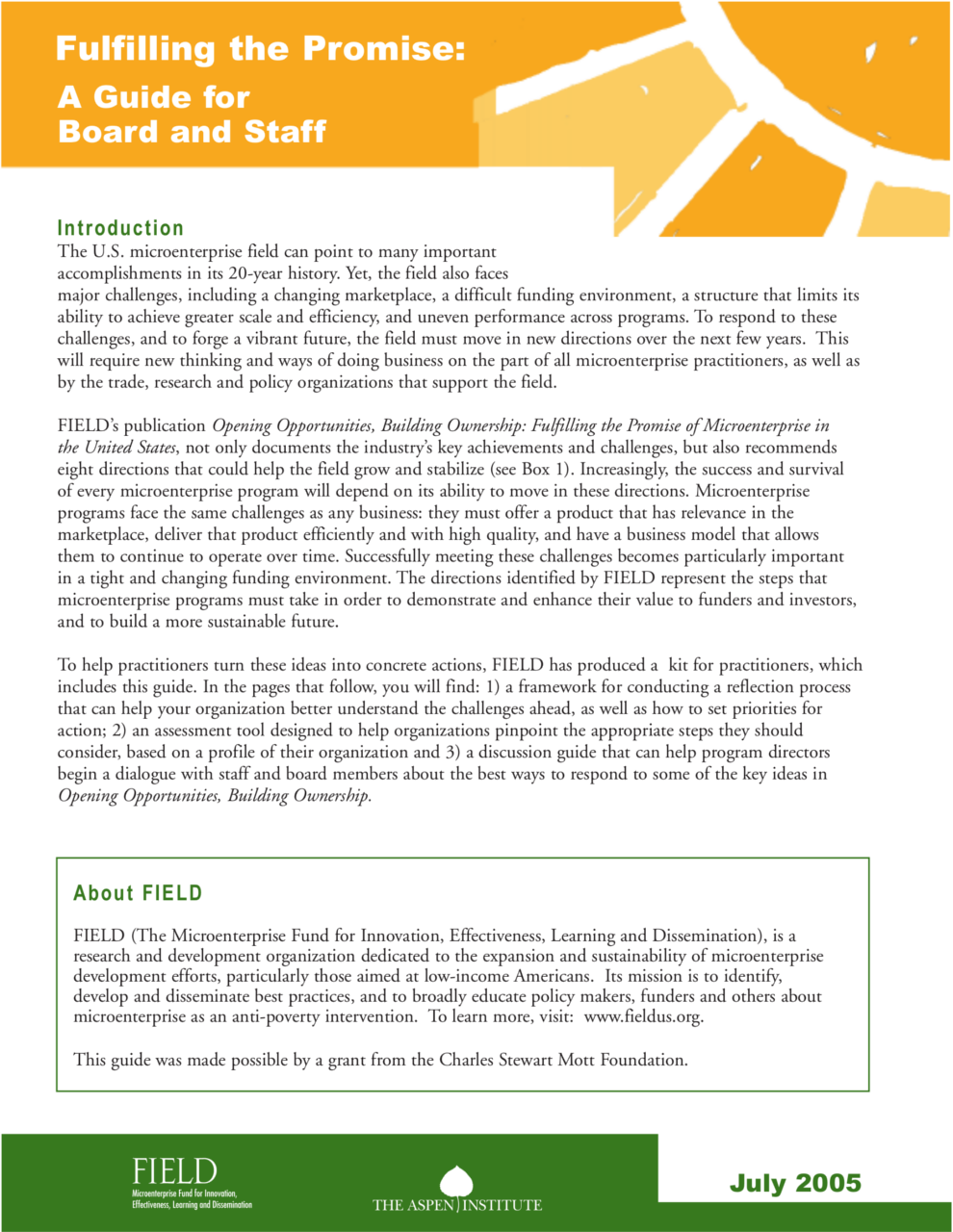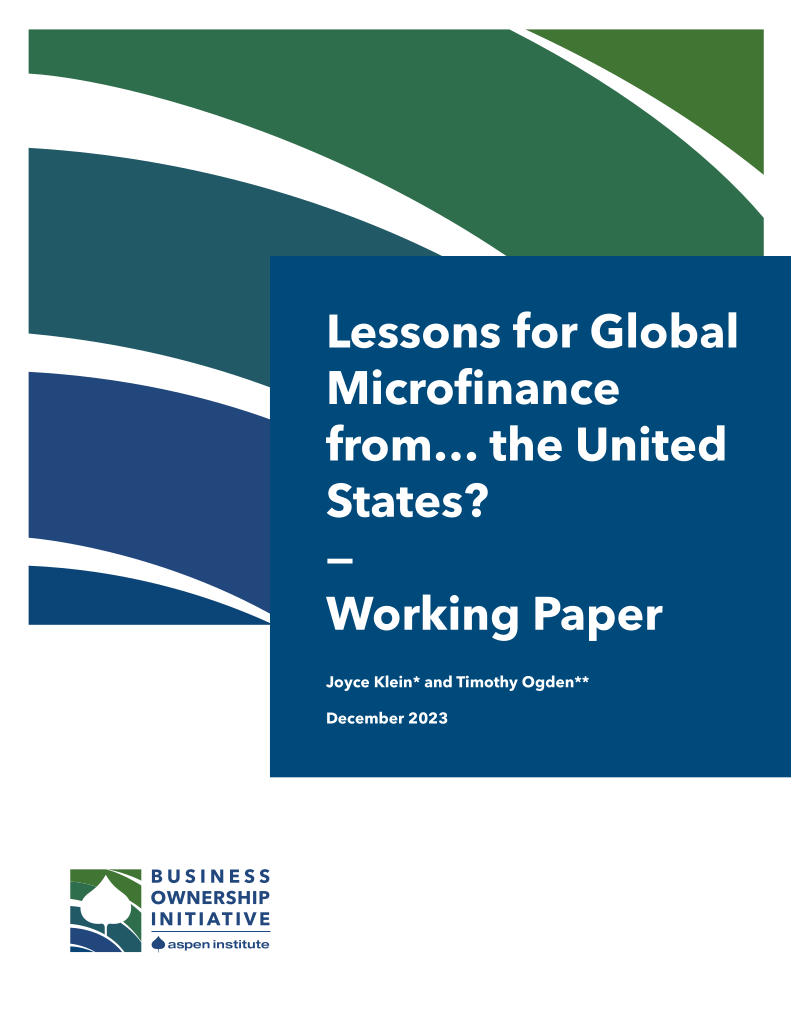The U.S. microenterprise field can point to many important accomplishments in its 20-year history. Yet, the field also faces major challenges, including a changing marketplace, a difficult funding environment, a structure that limits its ability to achieve greater scale and efficiency, and uneven performance across programs. To respond to these challenges, and to forge a vibrant future, the field must move in new directions over the next few years. This will require new thinking and ways of doing business on the part of all microenterprise practitioners, as well as by the trade, research and policy organizations that support the field.
FIELD’s publication Opening Opportunities, Building Ownership: Fulfilling the Promise of Microenterprise in the United States, not only documents the industry’s key achievements and challenges, but also recommends eight directions that could help the field grow and stabilize. Increasingly, the success and survival of every microenterprise program will depend on its ability to move in these directions. Microenterprise programs face the same challenges as any business: they must offer a product that has relevance in the marketplace, deliver that product efficiently and with high quality, and have a business model that allows them to continue to operate over time. Successfully meeting these challenges becomes particularly important in a tight and changing funding environment. The directions identified by FIELD represent the steps that microenterprise programs must take in order to demonstrate and enhance their value to funders and investors, and to build a more sustainable future.
To help practitioners turn these ideas into concrete actions, FIELD has produced a kit for practitioners, which includes this guide. In the pages that follow, you will find:
- a framework for conducting a reflection process that can help your organization better understand the challenges ahead, as well as how to set priorities for action;
- an assessment tool designed to help organizations pinpoint the appropriate steps they should consider, based on a profile of their organization and
- a discussion guide that can help program directors begin a dialogue with staff and board members about the best ways to respond to some of the key ideas in Opening Opportunities, Building Ownership.


